Analysis of Aromatic Components in Domestic and Imported Lamb Meat Using the Multi-Purpose Ion Source “ChemZo” (Report 2)
Purpose
A comparison of aromatic compounds present in Japanese domestic lamb brands A and B, as well as imported lamb, was conducted using a time-of-flight mass spectrometer combined with the ChemZo (temperature gradient heating mode).
Methods
| Ion source | ChemZo (BioChromato) Polarity: Positive, Negative |
| Mass Spectrometer | compact QTOF (Bruker) |
| Measurement Method | Approximately 25 mg each of lean meat and fat were sampled from domestic lamb brands A and B, as well as the imported lamb, and introduced into a POT L (large pot). The MS measurement was conducted while heating from room temperature to 250°C at a rate of 100°C/min.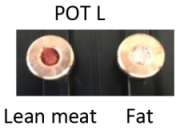 |
| Data Processing | Differential analysis (IDS) and database search (Compound Search) were performed using Spectra Scope. |
Results 1
The TIC (Total Ion Chromatogram) of the lean meat (positive and negative modes) for domestic lamb brands A and B, and imported lamb is shown in Fig. 1. Additionally, Fig. 2 presents the TIC (positive and negative modes) of the fat. These TICs indicate that the lean meat of domestic brand products exhibits higher intensity in both positive and negative modes compared to the imported lamb. Conversely, the fat demonstrates higher sensitivity in the imported lamb. Since aromatic compounds are predominantly present in fat, the differences in TIC intensities may reflect variations in aromatic compound composition and storage conditions.
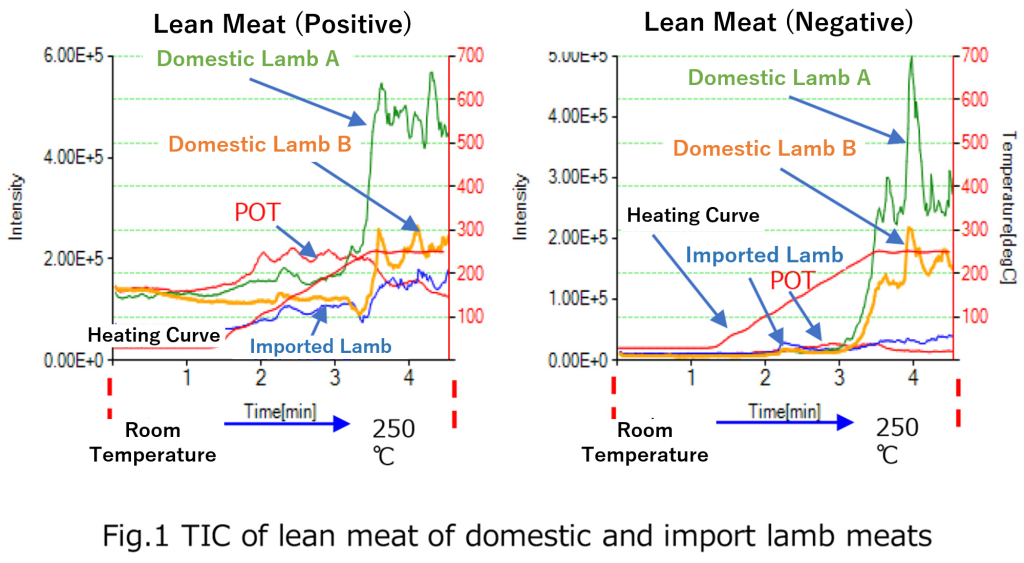
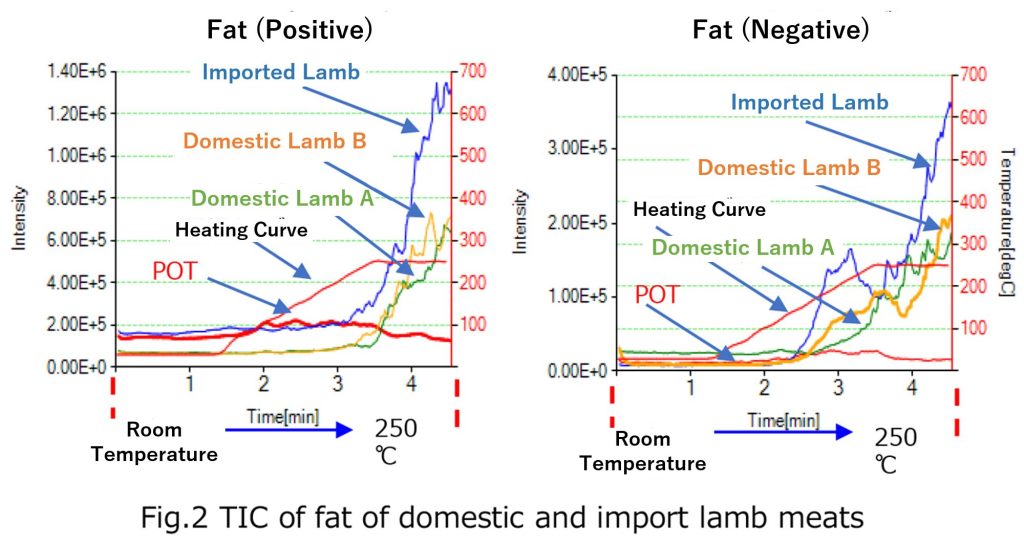
Results 2
Fig. 3 shows the mass spectra (positive and negative) of the fat samples. Differential analysis (IDS) and Compound Search were performed on each TIC. From the fat of the imported lamb, 4-ethyl octanoic acid and 4-methyl nonanoic acid, known to be responsible for the grassy odor, were detected. Fig. 4 presents the EIC of m/z 171.1391.
Since 4-ethyl octanoic acid and 4-methyl nonanoic acid are structural isomers, it is inferred that either one or both are present. Based on the EIC, it can be concluded that these components are also present in small amounts in the domestic branded lambs, but with lower intensity compared to the imported lamb, suggesting that the domestic lambs have less grassy odor. Fig. 5 shows the mass spectra of the 4-methyl nonanoic acid standard and the fat from imported lamb.
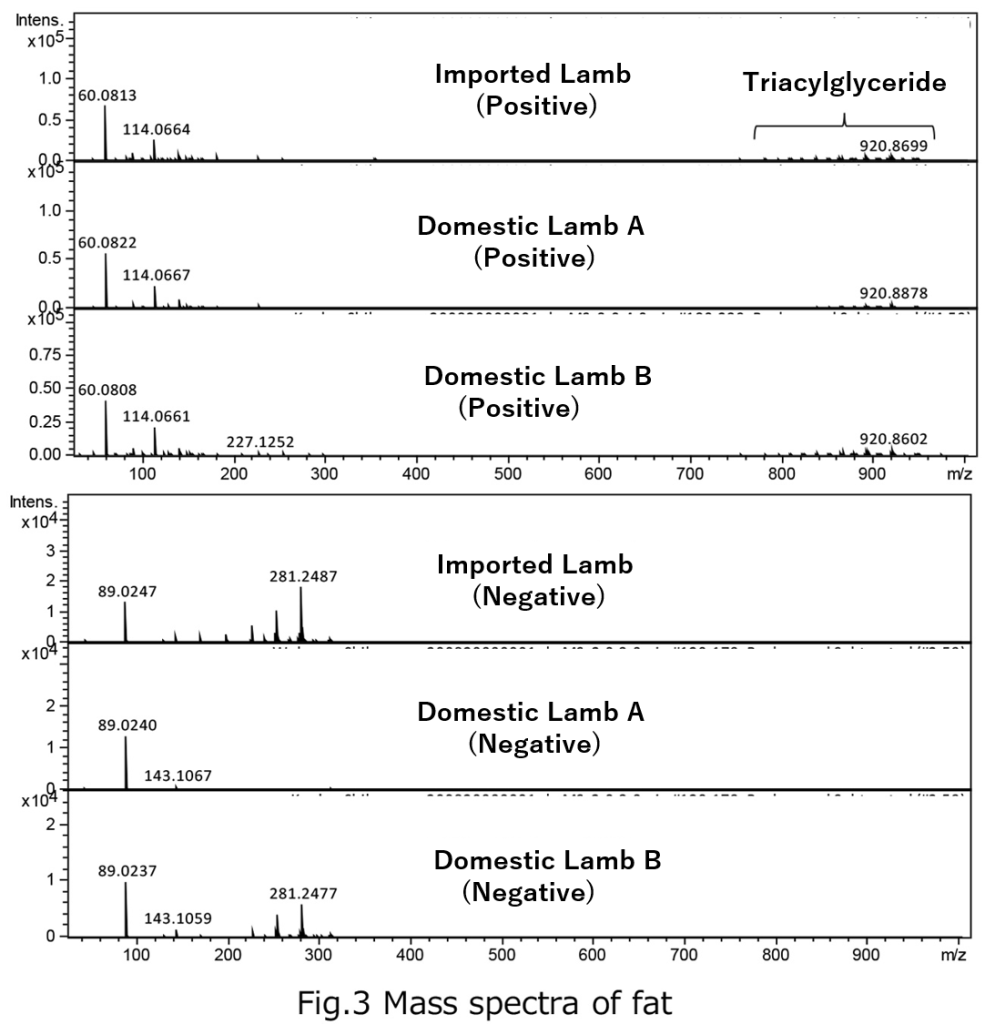
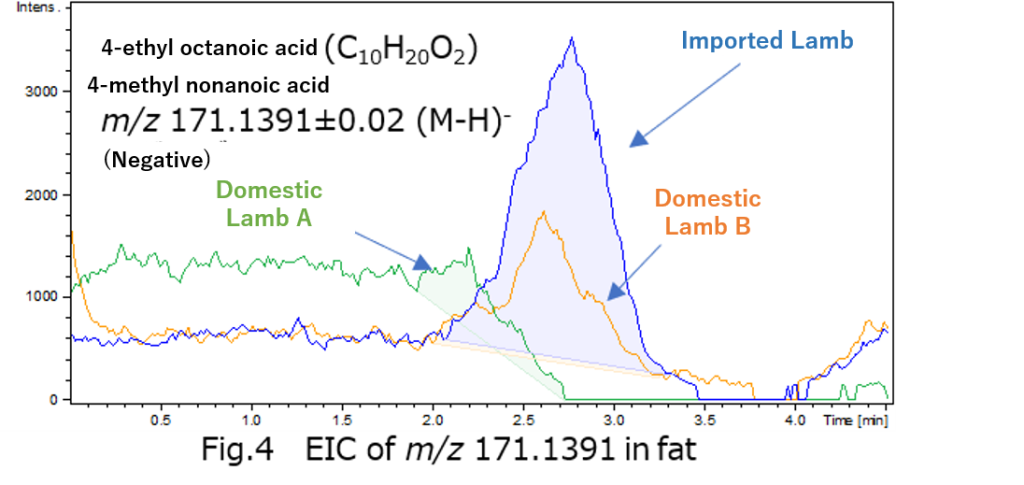

ChemZo Product Page / Applications
